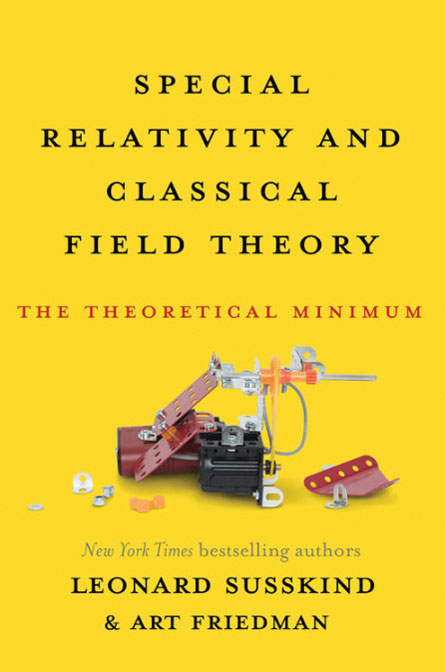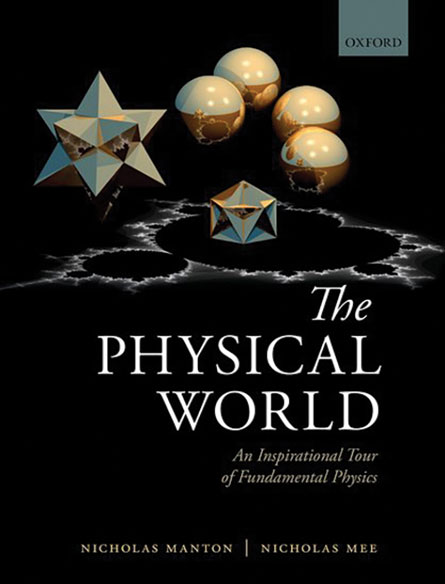Many books about science are meant to be pleasure reading. Such books attempt to convey the wonder and fascination and excitement of science, and ideally some of the substance as well. After all, good popular science writing is not only engaging and entertaining, but also informative. But even very informative popular books are not designed to be fully educational about the science in technical detail. Popularization by its very nature requires omission of detail and simplification in description.
As a result, many readers of popular science never get a true picture of how intricate and deep the corpus of scientific knowledge can be. For physics in particular, the “big ideas” conveyed via clever analogies and metaphors rarely reveal the richness of the mathematical foundations underlying them. It is equally rare for writers who do include equations to dissect them and analyze how they are derived. After all, most authors early on were advised of the old publisher’s axiom that each equation cuts a book’s sales in half.
Fortunately for those who like their physics raw, with the math uncensored, publishers sometimes rescind the keep-equations-to-a-minimum rule for books that remain accessible to dedicated readers interested in physical reality’s mathematical foundations.
One such book, Special Relativity and Classical Field Theory, is the third volume in Stanford University physicist Leonard Susskind’s “Theoretical Minimum” series. Previous volumes covered classical physics (SN: 4/20/13, p. 30) and quantum physics (SN: 6/14/14, p. 29). In the latest, Susskind (with Art Friedman) analyzes the mathematical apparatus of Einstein’s special theory of relativity, which describes matter in uniform motion, and the physics of fields, such as those explaining electricity, magnetism and associated phenomena.
As in previous volumes, Susskind walks you through the basics of each topic and builds the necessary math from scratch. It helps if you’ve read the earlier books (especially the first, which focuses on classical mechanics). But either way, your prime requirement for getting much benefit from this book is comfort with sophisticated mathematics.
Susskind is meticulous in explaining each step of applying the equations to the physical phenomena he describes, and he excels in explaining why the math works the way it does. Nevertheless, if matrices and tensors and summation indices give you headaches, prepare for a migraine. If you’re intrepid enough, though, you’ll emerge with a much deeper appreciation for the true meaning of Einstein’s relativity, Maxwell’s equations and many other aspects of fundamental physics.
For more detail (if perhaps less help), you could turn instead to The Physical World, by English physicists Nicholas Manton and Nicholas Mee. They have composed a treatise of impressive scope, encompassing all aspects of fundamental physics in one nearly 600-page volume. They start with the laws of motion and move on to Maxwell’s equations and fields, special and general relativity, quantum physics, atoms and molecules, thermodynamics, nuclear and particle physics, astrophysics and cosmology. Their text is straightforward and clear but dry and technical — equations are often embedded in a sentence as though they were words. It’s not a recipe for speed reading, but it is a thorough presentation of the rigorous math underlying a vast spectrum of natural entities and phenomena.
Both books emphasize the importance of variational principles in describing nature, such as the principle of least action. As Manton and Mee stress, “least action” refers to a certain efficiency in how nature operates; the principle is in many ways more fundamental than some physical laws. It applies in vastly diverse contexts; it even helps bridge the divide between classical and quantum physics. It is conceptually superior in that many other facts of physics (such as laws of motion) can be derived from it. But there is a cost, as Manton and Mee note: the need for “more sophisticated mathematical technology.” It’s simply inescapable that understanding the physical world precisely requires a grip on math that cannot be achieved without considerable mental effort.
Both of these books require such effort — they are not recreational beach reads. But they do make the rewards of deeper understanding attainable for anyone sufficiently motivated to pay the price.
Buy Special Relativity and Classical Field Theory or The Physical World from Amazon.com. Science News is a participant in the Amazon Services LLC Associates Program. Please see our FAQ for more details.
Editor’s note: This post was updated on October 19 to remove the header image because, as several commenters noted, it misrepresented Maxwell’s equations.
 Special Relativity and Classical Field Theory
Special Relativity and Classical Field Theory The Physical World
The Physical World






